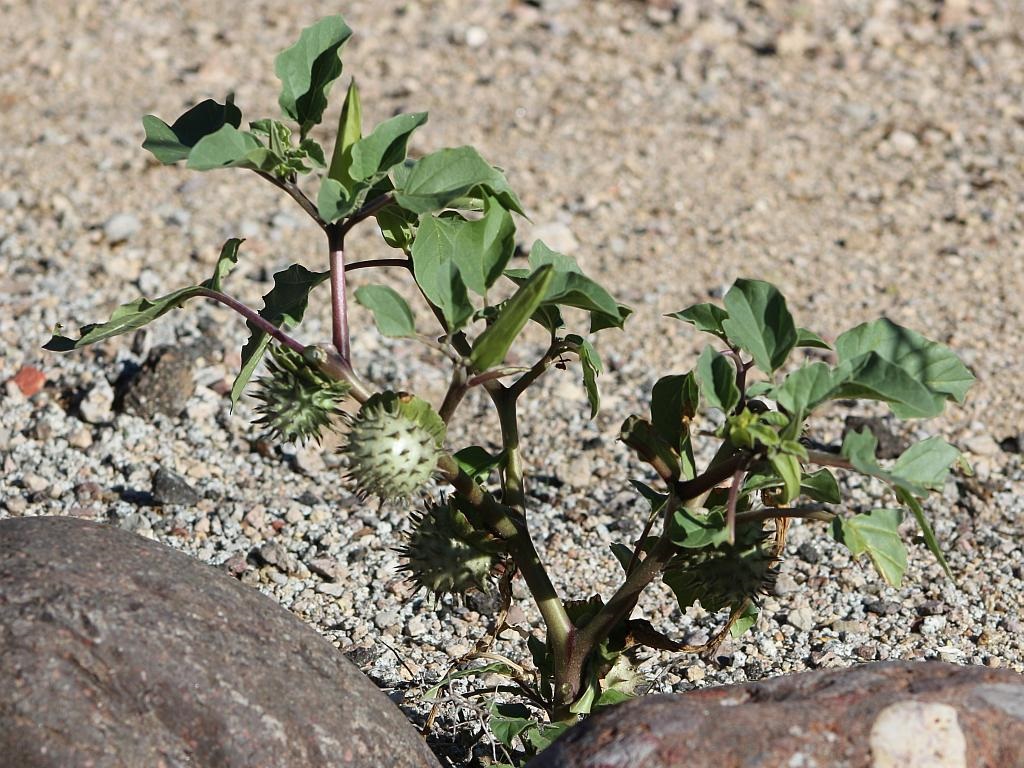When we walk the dogs for their daily trip up the road, we pass a neighbor’s property which is still unimproved/unmaintained natural desert, complete with creosote, mesquite, cat’s paw and a host of native cacti. There is this one little shrub that we have been passing and not paying much mind to it. Recently, seed pods resembling blowfish have appeared. Out of curiosity, I went to our desert guide to see if I could find a match. I found Sacred Datura to be a match for what we were seeing.
I looked up sacred datura on Wikipedia and found that the binomial name was Datura Wrightii which is a hallucinogenic herb used by some native American tribes.
Datura wrightii or sacred datura is the name of a poisonous perennial plant and ornamental flower of southwestern North America. It is sometimes used as a hallucinogen. D. wrightii is classified as a deliriant and an anticholinergic.
It is a vigorous herbaceous perennial that grows 30 cm to 1.5 m tall and wide. The leaves are broad and rounded at the base, tapering to a point, often with wavy margins. The flowers are the most striking feature, being sweetly fragrant white trumpets up to 20 cm (7.9 in) long, often tinted purple, especially at the margin. Five narrow points are spaced symmetrically around the rim. It can bloom from April to October. In clear weather, flowers open at nearly full dark and wither a few hours after sunrise the following morning; in cloudy weather, they may open earlier and last longer.
The seeds are borne in a spiny, globular capsule 3 to 4 cm in diameter, which opens when fully ripe.
D. wrightii is found in northern Mexico and the adjoining U. S. states, as far north as southern Utah, in open land with well-drained soils. It is also commonly planted as an ornamental, especially in xeriscapes.
The name commemorates the botanist Charles Wright.
Given that it is used in xeriscapes, we might try and obtain some of the seeds to cultivate new plants we can use for the rock and cactus garden.


Oh, boy…..Jimson Weed!
When I was in college there were multiple OD’s from that stuff, and a couple of people died from it.
The description of the health hazards in the Wikipedia article left no doubt as to the danger of using this stuff. And the deaths are not pretty either with blindness and insanity an integral part of the process.
Yeah, not only will it kill you, it will hurt like H3LL the entire time!
One of my college friends had his roommate die from the stuff, and he was with him the entire time in the ER.
He said it was not something he’d never want to see again…..